Headlines
 Jun Ye (Physics, JILA, NIST) and his students have built several generations of record-setting optical clocks. The technology has advanced to the point where Ye’s clocks would gain or lose less than a second in the whole age of the universe.
Jun Ye (Physics, JILA, NIST) and his students have built several generations of record-setting optical clocks. The technology has advanced to the point where Ye’s clocks would gain or lose less than a second in the whole age of the universe.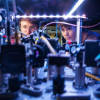 In a new study, physicists at CU Boulder have used a new type of atom “interferometer” to simultaneously measure acceleration in three dimensions—a feat that many scientists didn’t think was possible. The device could one day help people navigate submarines, spacecraft, cars and other vehicles more precisely.
In a new study, physicists at CU Boulder have used a new type of atom “interferometer” to simultaneously measure acceleration in three dimensions—a feat that many scientists didn’t think was possible. The device could one day help people navigate submarines, spacecraft, cars and other vehicles more precisely.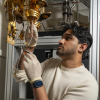 "Quantum is going to be everywhere—finance, pharma, energy and even weather forecasting," says Arjun Dalwadi, a third-year electrical and computer engineering student. "We need scientists and researchers who can bridge the gap between the theory and the real-world implementation."
"Quantum is going to be everywhere—finance, pharma, energy and even weather forecasting," says Arjun Dalwadi, a third-year electrical and computer engineering student. "We need scientists and researchers who can bridge the gap between the theory and the real-world implementation."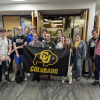 Students are getting a unique perspective on the quantum field and industry through a program they themselves are helping to shape. Quantum Scholars, which launched in 2023, is providing community and fellowships to students in physics, engineering, mathematics and computer science.
Students are getting a unique perspective on the quantum field and industry through a program they themselves are helping to shape. Quantum Scholars, which launched in 2023, is providing community and fellowships to students in physics, engineering, mathematics and computer science. Physics Professor Cindy Regal is one of eight investigators recognized for curiosity-driven research in chemistry or physics who will receive up to $2 million over five years. Regal aims to use the research support to demonstrate quantum entanglement with objects of larger mass than have been entangled before.
Physics Professor Cindy Regal is one of eight investigators recognized for curiosity-driven research in chemistry or physics who will receive up to $2 million over five years. Regal aims to use the research support to demonstrate quantum entanglement with objects of larger mass than have been entangled before.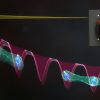 In a recent study published in Science, JILA and NIST Fellows Jun Ye and Ana Maria Rey explore the superexchange processes that occur between atoms in a three-dimensional optical lattice. Their study opens new avenues for exploring quantum magnetism and spin entanglement.
In a recent study published in Science, JILA and NIST Fellows Jun Ye and Ana Maria Rey explore the superexchange processes that occur between atoms in a three-dimensional optical lattice. Their study opens new avenues for exploring quantum magnetism and spin entanglement.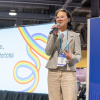 Hoang captivated the audience with her presentation "One, Two, Three Photons"—shedding light onto the quantum world and quantum technology, one photon at a time. She discussed the development of our understanding of light, from rays of light to light as coherent waves that can be created through lasers.
Hoang captivated the audience with her presentation "One, Two, Three Photons"—shedding light onto the quantum world and quantum technology, one photon at a time. She discussed the development of our understanding of light, from rays of light to light as coherent waves that can be created through lasers.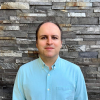 Ramin Ayanzadeh, who joined CU Boulder’s Department of Computer Science as an assistant professor in the fall of 2024, focuses his research on trustworthy quantum computing to enhance the reliability and security of quantum systems—including quantum software and computer architecture.
Ramin Ayanzadeh, who joined CU Boulder’s Department of Computer Science as an assistant professor in the fall of 2024, focuses his research on trustworthy quantum computing to enhance the reliability and security of quantum systems—including quantum software and computer architecture.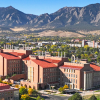 The University of Colorado has secured the No. 18 position on the National Academy of Inventors (NAI) 2024 Top 100 U.S. Universities Granted U.S. Utility Patents list, reinforcing CU’s standing as a national leader in research, innovation and real-world impact.
The University of Colorado has secured the No. 18 position on the National Academy of Inventors (NAI) 2024 Top 100 U.S. Universities Granted U.S. Utility Patents list, reinforcing CU’s standing as a national leader in research, innovation and real-world impact. Scott Sternberg, executive director of the CUbit Quantum Initiative at CU Boulder, highlights how quantum computers and sensing technologies promise to revolutionize various industries, as well as why Colorado needs to be at the center of this technology and innovation hub.
Scott Sternberg, executive director of the CUbit Quantum Initiative at CU Boulder, highlights how quantum computers and sensing technologies promise to revolutionize various industries, as well as why Colorado needs to be at the center of this technology and innovation hub.

